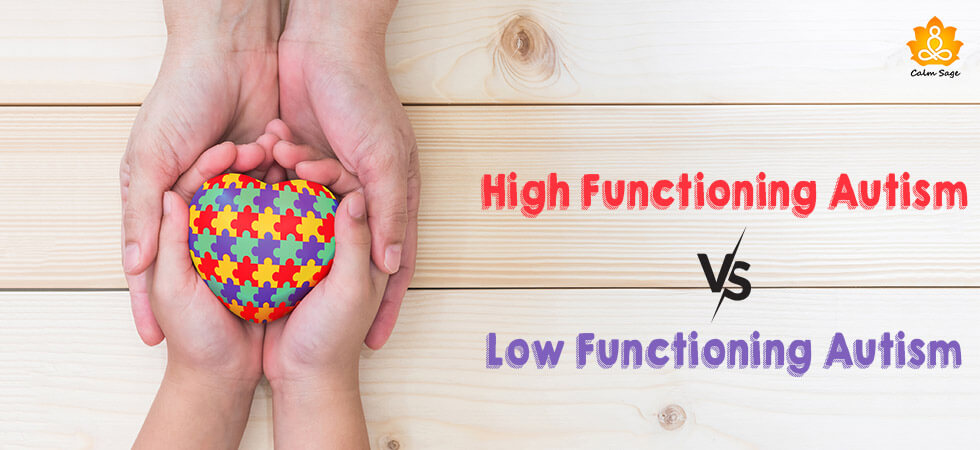High Functioning Autism vs. Low Functioning Autism (Everything You Need To Know)

If you have read about autism or if you ever spiked a conversation with someone on the autism theme you might have come across these two terms: High functioning autism (HFA) and Low functioning Autism (LFA).
But what if I tell you that the concept of analyzing autism in terms of an individual’s functioning is a mere fallacy? Bummer? Well, if you are going to pick up the Diagnostic Statistical Manual of Mental Disorders (DSM) you won’t ever see autism being distinguished on these grounds.
Also Read: Autism Spectrum Disorder (ASD): Symptoms, Causes, Treatment and More
Wait! Then why do we still use High and Low functioning autism to understand a child’s level of functioning and to make other important diagnoses?
Well, the answer is pretty simple: these two terms are classic and still continue to be used by the masses. Another reason behind the same is that people are not aware of the fact that this concept is a mere fallacy.
So to help you, teachers, parents, and other close associates of those who know someone with autism understand autism in detail today we shall analyze the concept of high and low functioning autism in detail.
What Is The Difference Between High And Low Functioning Autism:
Before we find out why we should reconsider the classic differentiation of high vs. low functioning autism we shall review it in detail.
The most prevalent difference between these two categorizations is that high functioning autism means deficits are being ignored and low functioning autism means assets are ignored.
Another difference between high and low-functioning autism is on the basis of behavior. Children with high functioning autism have similar abilities to his/her neurotypical peers while those with low functioning autism have inhibited ability to conduct daily life.
Also Read: 5 Best Exercises for Kids with Autism | Start Them NOW
What Is The Issue With High Vs Low Functioning Autism?
- They try to assess an individual on the grounds of the level of intelligence, anxiety, perseveration, aggression, sensory challenges, and special talents. Which is inappropriate.
- Both the terms fail at providing a whole picture of what a child is capable of, what are the areas they can excel in or improve in.
- This differentiation does not make it clear how they will work in their social atmosphere and their relationships.
- Neither term commits or provides enough information about how they are going to perform at a given task or what job profile would suit them.
- It is a rather complicated task to differentiate between the need of support of a child on the basis of high and low functioning autism.
- Basically, both these terms do not provide a whole picture of a child with autism. It does not specify how well they might respond to treatment, the need for the support they will require, and live their lives in general.
The problems with differentiating an individual on the grounds of High and Low functioning autism are:
So How To Differentiate Between People With Autism
The differentiation as per the diagnosis suggested by DSM-5 includes three levels of autism that are based on the level of support that people with autism need.
Now that you know why this concept of High Functioning Autism vs. Low Functioning Autism is a mere fallacy and why we need to stop considering it, share it with at least one person to enlighten them. Plus, it is always a great idea to have the right knowledge!
Do you think we should bring back the classic differentiation of high vs low functioning autism or the recent differentiation based on levels is a better approach? Share your viewpoint with us in the comments section below.
Looking for Autism Therapy for Your Child?
Also Read: When Your Child Is Resistant To Therapy, Here’s What Should You Do
Thank you for reading!
Next Read:
Yoga For Kids! Calming Yoga Poses For Kids & Their Benefits
How Applied Behavioral Analysis (ABA) Therapy Helps in Treating Autism
10 Incredibly Famous People With Autism Are An Inspiration For All
Remembering 8 Famous People Who Are Specially Abled & Get Inspired




















